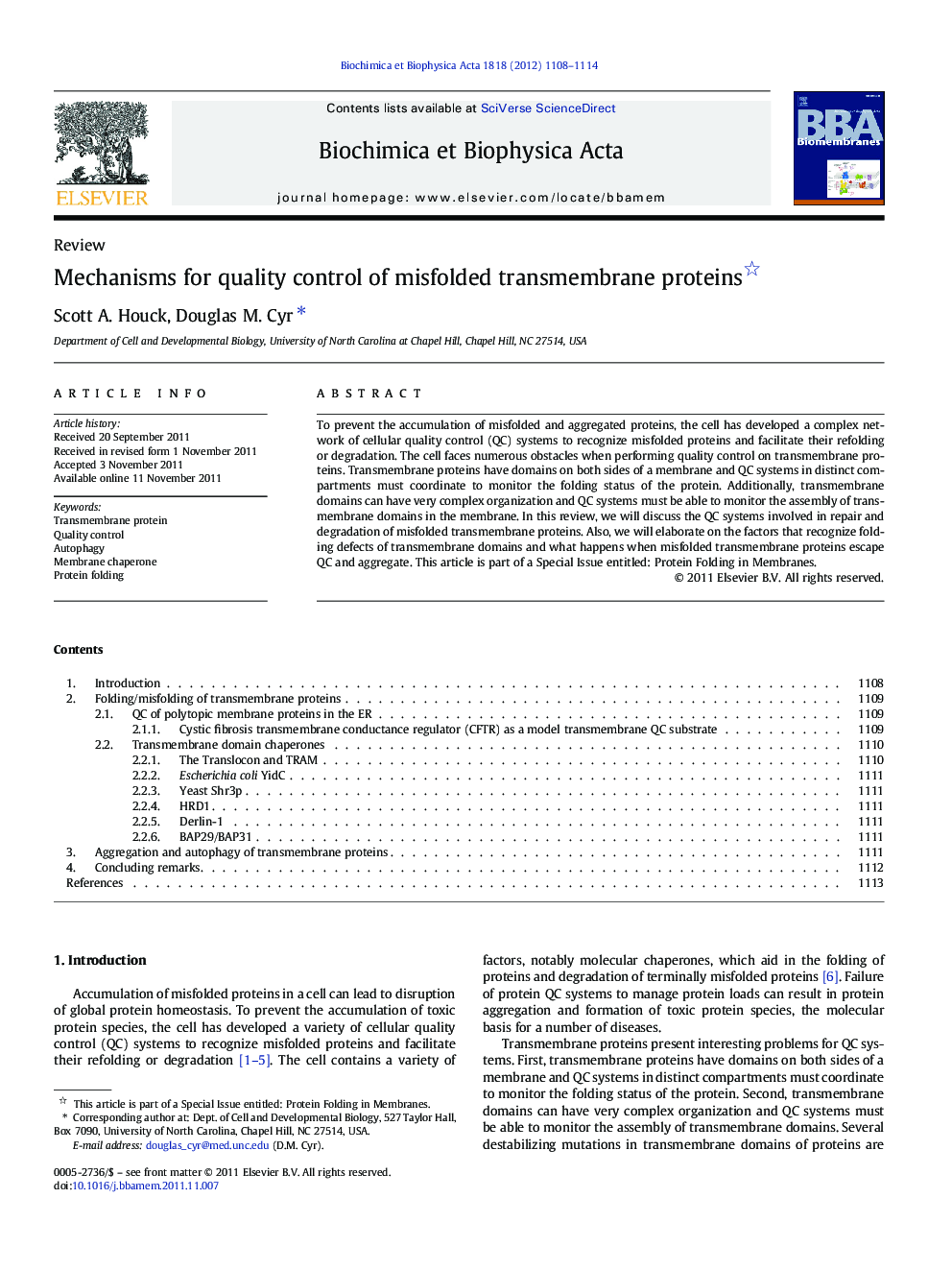| کد مقاله | کد نشریه | سال انتشار | مقاله انگلیسی | نسخه تمام متن |
|---|---|---|---|---|
| 1944559 | 1053221 | 2012 | 7 صفحه PDF | دانلود رایگان |

To prevent the accumulation of misfolded and aggregated proteins, the cell has developed a complex network of cellular quality control (QC) systems to recognize misfolded proteins and facilitate their refolding or degradation. The cell faces numerous obstacles when performing quality control on transmembrane proteins. Transmembrane proteins have domains on both sides of a membrane and QC systems in distinct compartments must coordinate to monitor the folding status of the protein. Additionally, transmembrane domains can have very complex organization and QC systems must be able to monitor the assembly of transmembrane domains in the membrane. In this review, we will discuss the QC systems involved in repair and degradation of misfolded transmembrane proteins. Also, we will elaborate on the factors that recognize folding defects of transmembrane domains and what happens when misfolded transmembrane proteins escape QC and aggregate. This article is part of a Special Issue entitled: Protein Folding in Membranes.
► We discuss the basis for unfolding of transmembrane proteins.
► We discuss the quality control pathways responsible for recognition of misfolded transmembrane.
► We discuss what happens when transmembrane proteins aggregate.
Journal: Biochimica et Biophysica Acta (BBA) - Biomembranes - Volume 1818, Issue 4, April 2012, Pages 1108–1114